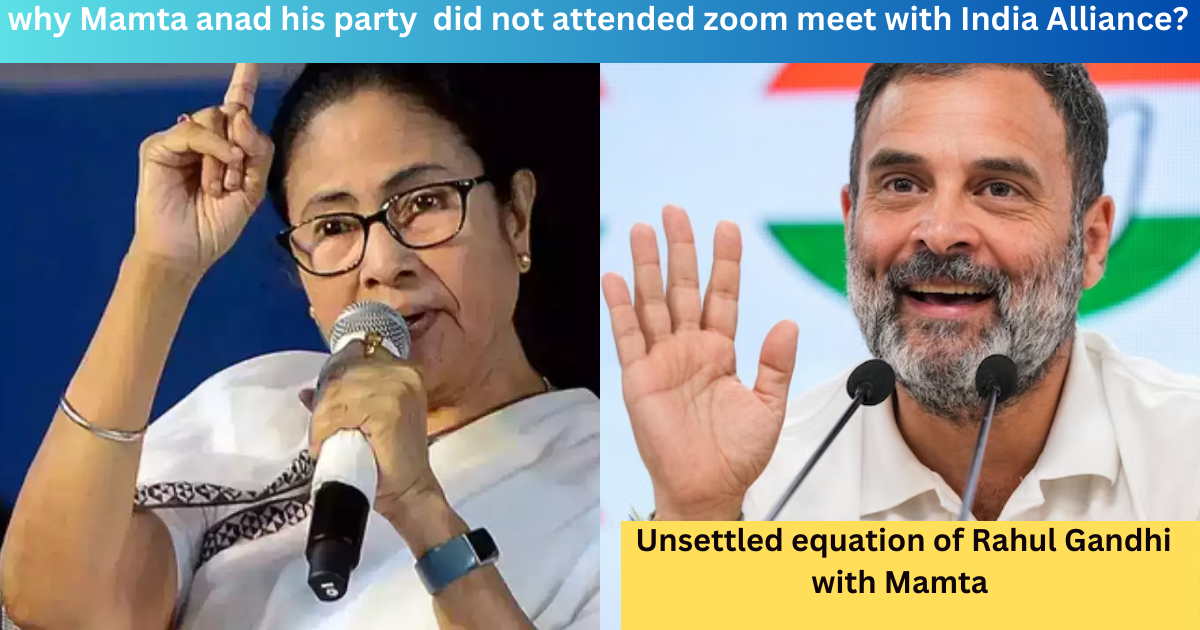“Navigating the Electoral Chessboard: INDIA Alliance Faces Challenges in Bengal Puzzle”

What is India Alliance :
before moving forward we should have a quick learn about What actually India Alliance is . we know about the political vacuum our country is facing that is not having a strong adequate opposition . acknowledging the power of political dominance of BJP a coalition of various opposition parties came together to defeat the current ruling party in power. The Indian National Developmental Inclusive Alliance (I.N.D.I.A; IAST: “Bhāratīya Rāṣhṭrīya Vikāsātmaka Samāveśhī Gaṭhabandhan)” is a big umbrella political alliance of 28 political parties in India led by the Indian National Congress.
INDIA Alliance Faces Challenges in Bengal
As the political landscape in India gears up for the upcoming general elections, the opposition bloc, excluding Trinamool Congress (TMC), is set to convene over a Zoom meeting. This strategic gathering, scheduled just a day before the Bharat Jodo Nyay Yatra, reflects the beginning of a bustling election campaign season. Amid the festivities, the Congress, a key player in the INDIA alliance, finds itself at a crossroads with unresolved issues, particularly concerning its relationship with the TMC.
The Unsettled Equation with Trinamool:
The absence of TMC and its leader, Mamata Banerjee, in the Zoom meeting raises eyebrows, highlighting the strained relations between the two parties. The lack of transparency in communication, coupled with short notice, further adds to the complexity of the situation. The refusal of TMC to engage with the Congress on seat-sharing agreements in West Bengal underscores the challenges faced by the opposition bloc.
The Conundrum of Seat-Sharing: One of the critical issues on the agenda is seat-sharing talks, a process crucial for the success of the INDIA alliance in the upcoming elections. The TMC’s offer of two or a maximum of three constituencies to the Congress reflects the intricate negotiation process and the underlying power dynamics. The Congress, and even the Left, find themselves in a dilemma, torn between accommodating the TMC’s terms and standing firm for the national alliance’s interest.
The Convener Conundrum:
The looming appointment of a convener within the alliance adds another layer of complexity to the situation. The Janata Dal (United) has expressed a desire for Nitish Kumar to be appointed convener, a proposal to which the Congress seems agreeable if a consensus is reached within the bloc. This internal deliberation further emphasizes the need for cohesion within the opposition to effectively counter the electoral juggernaut of the BJP.
Historical Context and Strategic Imperatives:
Reflecting on the historical context, the leaders in the opposition are grappling with a situation akin to the alliances formed during World War II. The necessity to halt the BJP’s electoral dominance is evident, but the ground realities in West Bengal present a formidable challenge. The delicate balance between state and national interests is a tightrope that the opposition parties must navigate carefully.
As the INDIA alliance engages in intense deliberations over Zoom, the Bengal puzzle remains a focal point. The reluctance of the Congress and the Left to agree to the TMC’s terms signals the complexity of the political chessboard they find themselves on. The urgency to resolve these issues becomes paramount, considering the BJP’s anticipated acceleration in poll preparation post the inauguration of the Ram Temple in Ayodhya. The opposition’s ability to navigate this intricate puzzle will undoubtedly shape the course of the impending electoral battle.